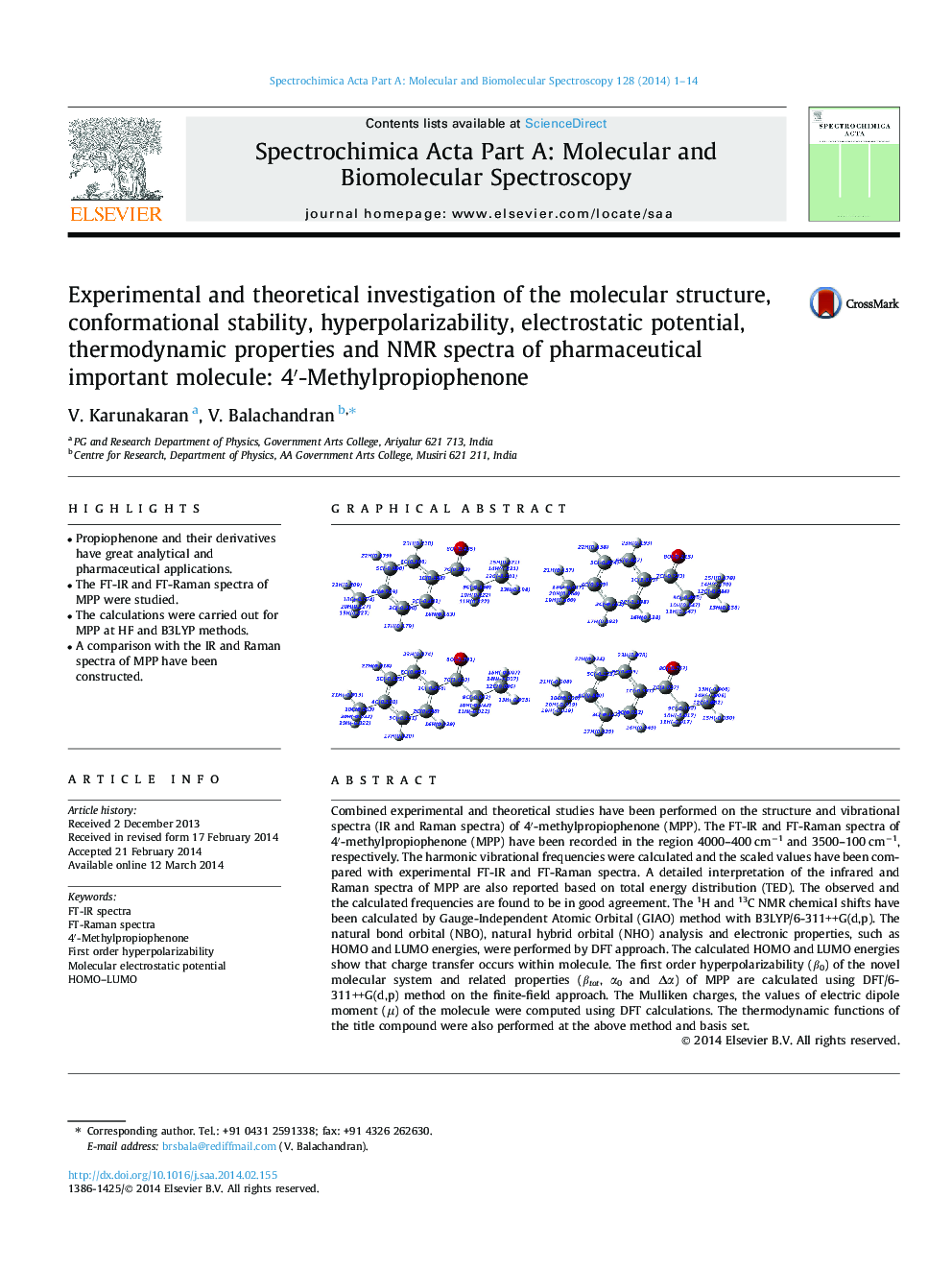| Article ID | Journal | Published Year | Pages | File Type |
|---|---|---|---|---|
| 1230537 | Spectrochimica Acta Part A: Molecular and Biomolecular Spectroscopy | 2014 | 14 Pages |
•Propiophenone and their derivatives have great analytical and pharmaceutical applications.•The FT-IR and FT-Raman spectra of MPP were studied.•The calculations were carried out for MPP at HF and B3LYP methods.•A comparison with the IR and Raman spectra of MPP have been constructed.
Combined experimental and theoretical studies have been performed on the structure and vibrational spectra (IR and Raman spectra) of 4′-methylpropiophenone (MPP). The FT-IR and FT-Raman spectra of 4′-methylpropiophenone (MPP) have been recorded in the region 4000–400 cm−1 and 3500–100 cm−1, respectively. The harmonic vibrational frequencies were calculated and the scaled values have been compared with experimental FT-IR and FT-Raman spectra. A detailed interpretation of the infrared and Raman spectra of MPP are also reported based on total energy distribution (TED). The observed and the calculated frequencies are found to be in good agreement. The 1H and 13C NMR chemical shifts have been calculated by Gauge-Independent Atomic Orbital (GIAO) method with B3LYP/6-311++G(d,p). The natural bond orbital (NBO), natural hybrid orbital (NHO) analysis and electronic properties, such as HOMO and LUMO energies, were performed by DFT approach. The calculated HOMO and LUMO energies show that charge transfer occurs within molecule. The first order hyperpolarizability (β0) of the novel molecular system and related properties (βtot, α0 and Δα) of MPP are calculated using DFT/6-311++G(d,p) method on the finite-field approach. The Mulliken charges, the values of electric dipole moment (μ) of the molecule were computed using DFT calculations. The thermodynamic functions of the title compound were also performed at the above method and basis set.
Graphical abstractFigure optionsDownload full-size imageDownload as PowerPoint slide
